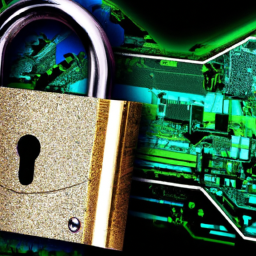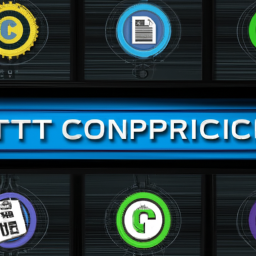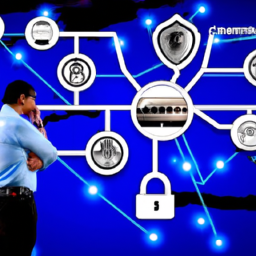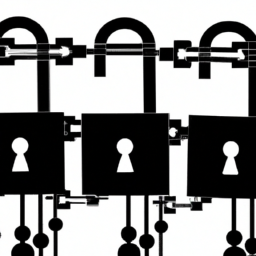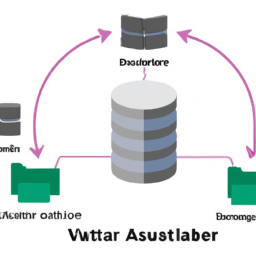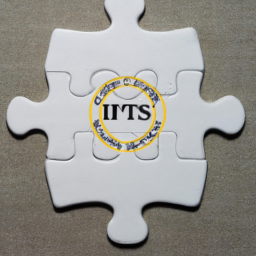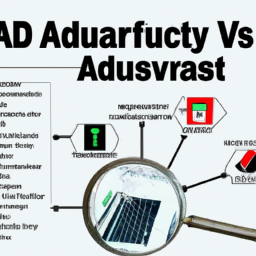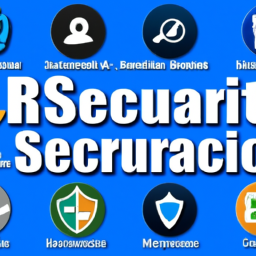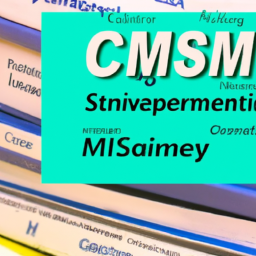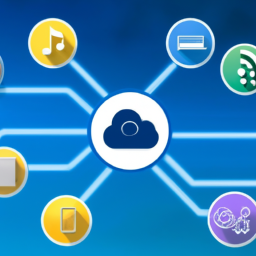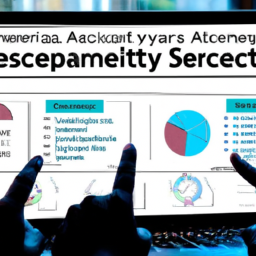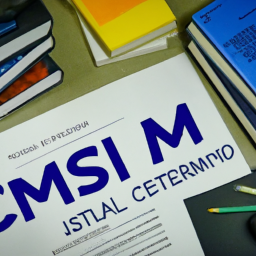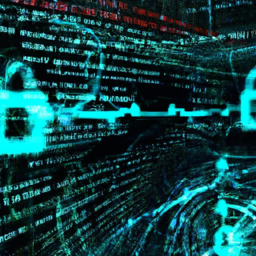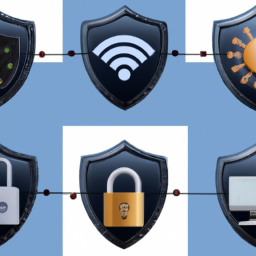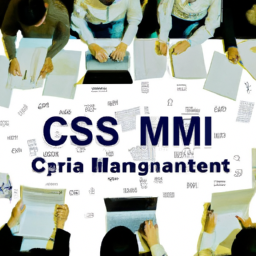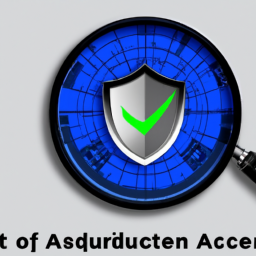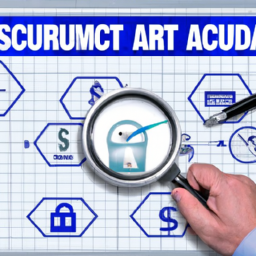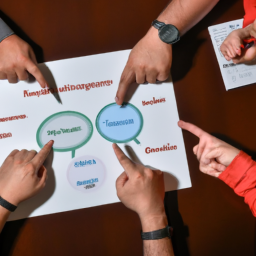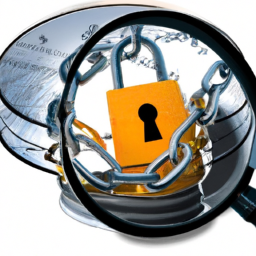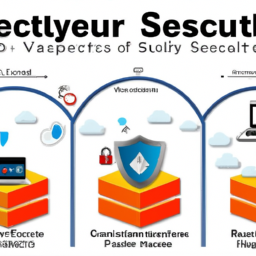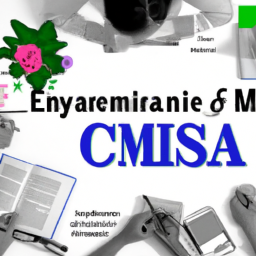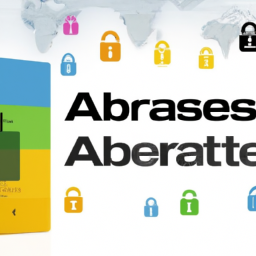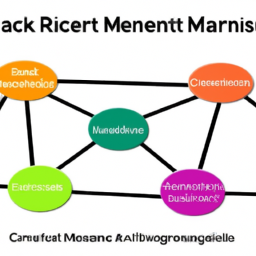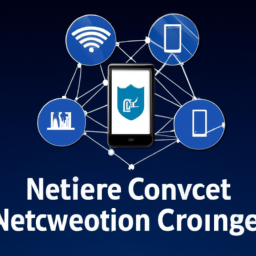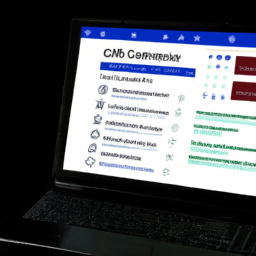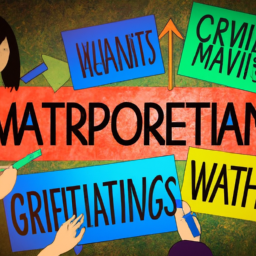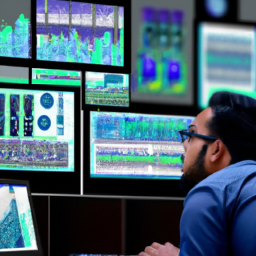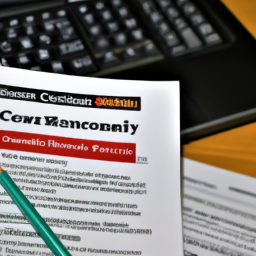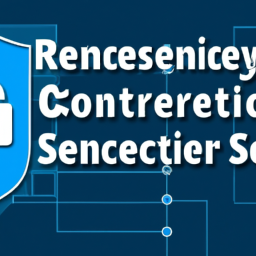If you’ve ever wondered how security experts identify and mitigate potential threats, then you’re in the right place. The methodology of security threat assessment is a crucial aspect of ensuring the safety and integrity of individuals, organizations, and nations. By utilizing a systematic and evidence-based approach, security professionals are able to analyze and evaluate potential risks, allowing them to develop effective strategies for prevention and response.
In this article, we will explore the key components of security threat assessment and the importance of conducting a thorough threat analysis. You will gain insight into the process of implementing security measures based on the findings of the assessment, as well as the importance of continual monitoring and evaluation to ensure ongoing effectiveness.
To reinforce these concepts, we will also delve into real-life case studies and examples that highlight the practical application of security threat assessment methodologies.
By understanding the methodology of security threat assessment, you will be better equipped to navigate the complex landscape of security challenges and make informed decisions to protect yourself, your organization, and those around you.
So, let’s dive in and uncover the truth behind this essential practice.
Key Takeaways
- Security threat assessment is a systematic and evidence-based process.
- Technology plays a vital role in enhancing threat assessment capabilities.
- Comprehensive information management and threat intelligence sources are important for gathering and analyzing information.
- Regular evaluation and adaptation of security measures are necessary to address emerging threats.
Understanding the Importance of Security Threat Assessment
Understanding the importance of security threat assessment is crucial in keeping our loved ones and communities safe. In today’s world, where threats can come from various sources, it is essential to have a comprehensive understanding of the significance of security threat assessment.
By conducting thorough assessments, we can identify potential risks and vulnerabilities, allowing us to implement effective preventive measures. Technology plays a vital role in security threat assessment, providing us with advanced tools and techniques to gather and analyze data. It enables us to monitor and detect potential threats in real-time, enhancing our ability to respond quickly and efficiently.
By leveraging technology, we can stay one step ahead of potential threats and protect our communities.
Now, let’s delve into the key components of security threat assessment.
Key Components of Security Threat Assessment
When conducting a security threat assessment, there are three key components that you need to focus on: gathering and analyzing information, risk assessment and prioritization, and developing mitigation strategies.
The first step involves gathering all relevant information about potential threats, including intelligence reports, historical data, and expert opinions. Once you’ve collected this data, you must analyze it to identify patterns, trends, and potential vulnerabilities.
This information will then be used to assess the risks posed by each threat and prioritize them based on their potential impact and likelihood.
Finally, you’ll develop mitigation strategies to address and minimize the identified risks, ensuring the security and safety of your organization.
Gathering and Analyzing Information
To effectively gather and analyze information for security threat assessment, you must first focus on collecting relevant data and then apply the adage ‘knowledge is power’ to make informed decisions. This involves implementing effective information management strategies and utilizing threat intelligence sources.
-
Establish a comprehensive information management system: This includes creating a structured process for collecting, organizing, and storing data. It is important to ensure that the information is easily accessible and regularly updated.
-
Utilize threat intelligence sources: Stay informed about the latest security threats by leveraging external sources such as government agencies, security vendors, and industry-specific forums. These sources provide valuable insights into emerging threats and vulnerabilities.
-
Analyze and interpret the data: Once the data is collected, it is crucial to analyze and interpret it effectively. This involves identifying patterns, trends, and potential risks. Use analytical tools and techniques to gain a deeper understanding of the threat landscape.
By effectively gathering and analyzing information, you can then proceed to the next step of risk assessment and prioritization.
Risk Assessment and Prioritization
Once you have gathered and analyzed information, it’s crucial to prioritize and assess risks to ensure effective security measures are implemented. Risk management is a key component in the methodology of security threat assessment. By conducting a thorough vulnerability assessment, you can identify potential weaknesses and determine the likelihood and potential impact of different threats. This allows you to prioritize the risks based on their severity and develop a plan to address them accordingly. To help you visualize this process, consider the following table:
| Risk | Likelihood | Impact | Priority | Mitigation Strategy |
|---|---|---|---|---|
| A | High | Medium | High | Implement additional access controls |
| B | Low | High | High | Enhance network monitoring |
| C | Medium | Low | Medium | Conduct regular security audits |
By assessing and prioritizing risks, you can focus your efforts on addressing the most critical vulnerabilities first. This sets the stage for the subsequent section on developing mitigation strategies.
Developing Mitigation Strategies
To effectively protect your assets and reduce potential risks, you need to develop mitigation strategies that target the most critical vulnerabilities and address them head-on.
Developing a response plan is crucial in ensuring that you’re prepared to handle any security threat that may arise. This involves identifying the potential threats that your organization may face and evaluating their potential impact.
Once you’ve identified the vulnerabilities, you can then develop strategies to mitigate the risks associated with them. These strategies can include implementing security measures such as firewalls, encryption, and access controls.
It’s important to regularly evaluate the effectiveness of these mitigation strategies to ensure that they’re working as intended. By continuously monitoring and assessing the effectiveness of your mitigation strategies, you can make necessary adjustments to better protect your assets.
Now, let’s transition into the subsequent section about conducting a threat analysis.
Conducting a Threat Analysis
When conducting a threat analysis, you need to focus on three key points:
-
Identifying threat actors and their motivations. By identifying the threat actors and their motivations, you can gain a deeper understanding of their intentions and potential actions.
-
Assessing potential impact and consequences. Assessing the potential impact and consequences allows you to determine the severity of the threat and its potential ramifications.
-
Evaluating probability and likelihood. Evaluating the probability and likelihood helps you prioritize and allocate resources effectively to address the most pressing threats.
Identifying Threat Actors and Motivations
Imagine you’re tasked with identifying threat actors and their motivations in the complex world of cybersecurity. To effectively conduct a threat analysis, it’s crucial to thoroughly analyze threat actors and their behavioral patterns.
By examining their techniques, tactics, and procedures, you can gain valuable insights into their motivations and objectives. This behavioral analysis involves studying past attacks, identifying patterns, and understanding the motivations behind them.
By doing so, you can uncover whether the threat actors are financially motivated, politically driven, or seeking to cause disruption. Understanding their motivations is essential for formulating effective countermeasures and mitigating potential risks.
With this comprehensive understanding of threat actors and their motivations, you can then transition into assessing potential impact and consequences, ensuring a holistic approach to security threat assessment.
Assessing Potential Impact and Consequences
By delving into the depths of the cyber realm, one can unravel the ripple effect that potential threats and their consequences have on the fragile fabric of digital existence. Assessing the potential impact and consequences of security threats is crucial for effective risk management.
It involves identifying potential vulnerabilities that could be exploited by threat actors and evaluating the potential consequences of successful attacks.
To evoke an emotional response in the audience, consider these three points:
- The devastating financial losses that organizations may suffer due to security breaches.
- The erosion of customer trust and damage to reputation that can result from data breaches.
- The potential disruption to critical infrastructure, such as power grids or transportation systems, which could have far-reaching consequences for society.
Understanding the potential impact and consequences of security threats is essential for developing robust defense strategies. It enables organizations to prioritize resources and implement appropriate countermeasures.
Now, let’s transition into evaluating probability and likelihood by considering the next step in the security threat assessment methodology.
Evaluating Probability and Likelihood
To truly understand the potential impact and consequences of security threats, you must delve into the realm of evaluating probability and likelihood. This allows you to make informed decisions about defense strategies. Evaluating risk is a crucial step in the methodology of security threat assessment.
By assessing the probability and likelihood of different threats, you can prioritize your security efforts and allocate resources effectively. This evaluation involves analyzing historical data, conducting vulnerability assessments, and considering threat intelligence.
Various threat assessment techniques, such as the use of statistical models, scenario analysis, and expert judgment, can help you gauge the likelihood of different security threats. By combining these techniques and considering the context of your organization or system, you can develop a comprehensive understanding of the risks you face.
With this knowledge, you can then move on to implementing security measures that mitigate these risks and protect your assets.
Implementing Security Measures
One effective way of implementing security measures is through the use of advanced surveillance systems. These systems are designed to detect and deter potential threats, providing real-time monitoring and recording of activities. By utilizing high-definition cameras, motion sensors, and facial recognition technology, these surveillance systems can effectively prevent security threats from occurring. In addition, access control systems such as biometric scanners and key card readers can further enhance security by limiting access to authorized personnel only. By implementing these measures, organizations can significantly reduce the risk of security breaches and protect their assets, employees, and customers. However, it is important to note that security measures should not stop at implementation. Continued monitoring and evaluation of these systems is crucial to ensure their effectiveness and adaptability to evolving threats. The next section will explore the importance of continual monitoring and evaluation in maintaining a secure environment.
Continual Monitoring and Evaluation
Now that you’ve implemented security measures, it’s crucial to ensure their effectiveness through continual monitoring and evaluation.
Continual monitoring involves regularly assessing the security measures in place to identify any vulnerabilities or weaknesses that may have been overlooked. By actively monitoring the system, you can detect and respond to potential threats in a timely manner, minimizing the impact of any security breaches.
Additionally, continual evaluation allows you to adapt and improve your security measures based on emerging threats and changing circumstances. This can be done through threat assessment techniques such as penetration testing, vulnerability scanning, and security audits. By employing these methods, you can stay one step ahead of potential threats and protect your organization’s assets.
Moving forward, let’s explore some case studies and examples that demonstrate the effectiveness of these security practices.
Case Studies and Examples
Wow, brace yourself for some mind-blowing case studies and examples that will leave you speechless!
When it comes to security threat assessment, examining real-world scenarios is crucial in understanding the methodology and its effectiveness. By analyzing case studies, we can gain valuable insights into the complex nature of security threats and the strategies employed to mitigate them.
One notable example is the Stuxnet worm, which targeted Iran’s nuclear program in 2010. This cyberattack utilized advanced techniques and exploited vulnerabilities to sabotage centrifuges, causing significant damage.
Another case study is the 2013 Target data breach, where hackers infiltrated the company’s network and stole millions of customer records.
These examples highlight the importance of continuous monitoring and evaluation in identifying and responding to security threats. They serve as a reminder of the ever-evolving nature of threats and the need for robust security measures.
Frequently Asked Questions
What are the potential consequences of not conducting a security threat assessment?
Not conducting a security threat assessment can have serious potential consequences. Without an assessment, you’re leaving your organization vulnerable to security breaches and attacks. This can lead to financial losses, damaged reputation, and legal consequences.
Assessments are important as they help identify and mitigate potential risks, allowing you to implement effective security measures. By neglecting the importance of assessment, you’re putting your organization at a higher risk of experiencing security incidents.
How can organizations ensure that the information gathered during a threat analysis is accurate and reliable?
To ensure accuracy and reliability of the information gathered during a threat analysis, organizations must focus on accuracy verification and data validation.
Parallelism can be employed to create vivid imagery in your audience’s mind. By implementing rigorous verification processes, such as cross-referencing data from multiple sources and conducting thorough checks for inconsistencies, organizations can ensure the accuracy of the information collected.
Additionally, data validation techniques, such as data integrity checks and statistical analysis, can help identify and rectify any errors or anomalies in the gathered information.
Are there any legal or ethical considerations that need to be taken into account when implementing security measures?
When implementing security measures, you must carefully consider legal and ethical considerations.
Legally, organizations must comply with relevant laws and regulations, such as privacy laws or industry-specific regulations.
Ethically, organizations should ensure that their security measures respect individuals’ rights and privacy. For example, collecting certain types of data may require informed consent.
It is important to conduct a thorough analysis of these considerations to ensure that security measures are implemented in a lawful and ethical manner.
How can organizations effectively prioritize security measures based on the identified threats?
To effectively prioritize security measures based on identified threats, organizations can utilize prioritization techniques and a risk assessment framework.
One interesting statistic is that, according to a study by the Ponemon Institute, 60% of organizations prioritize security measures based on the potential impact of a threat on their business. This approach allows them to allocate resources and focus on mitigating the most significant risks first.
By using a risk assessment framework, organizations can objectively evaluate the likelihood and potential impact of each threat. This helps them make informed decisions about prioritization.
What are some common challenges faced during the continual monitoring and evaluation phase of security threat assessment?
Challenges in continual monitoring of security threat assessment include the need for dedicated resources, the complexity of data analysis, and the evolving nature of threats.
To effectively monitor threats, organizations must allocate sufficient personnel and technology resources. The analysis of constantly changing data can be overwhelming, requiring advanced tools and skilled professionals.
Additionally, threats are dynamic and can evolve rapidly, making it crucial for organizations to stay updated and adapt their monitoring strategies accordingly.
Conclusion
In conclusion, conducting a thorough security threat assessment is crucial in safeguarding individuals, organizations, and even nations. By employing a methodology that includes understanding the importance of threat assessment, analyzing potential risks, implementing appropriate security measures, and continually monitoring and evaluating the effectiveness of these measures, one can effectively mitigate security threats.
Case studies and examples further demonstrate the significance of this approach in preventing and addressing security breaches. So, don’t overlook the importance of a comprehensive security threat assessment; it could be the key to protecting what matters most.




